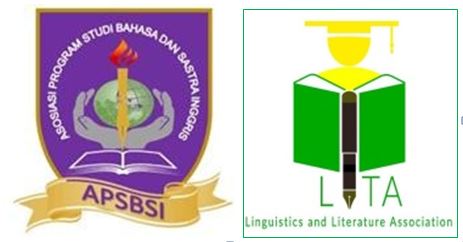Social Attitudes, Environmental Factors, and Laws-Institutions Impacts on School Dropouts: Case Studies in Sumba Island
DOI:
https://doi.org/10.31849/utamax.v5i1.11818Keywords:
Access to education, School dropouts, Social attitudes, Environmental Factors, Laws-InstitutionsAbstract
This research is based on the fact that most children in West Sumba and Central Sumba are forced to drop out of school for various very crucial reasons. The purpose of this study refers to efforts to identify various factors that influence the high dropout rate. The collected data shows that the number of primary school dropouts in West Sumba was 151 students (0.76%) from 18,772 primary school students in the regency. The highest number was in the Lamboya and Tanarighu districts, making up 2.02% and 1.06%, respectively. The percentage is even lower for secondary school dropouts, which is 0.006% of the total of 13,368 junior high school students in West Sumba. The percentage of school dropouts at the primary schools in the Central Sumba Regency is 0.72%. From the collected data, the highest dropout rates are in the districts of Mamboro (1.28%). The percentage of secondary school dropouts in Central Sumba is 2.14%. The highest numbers were in the districts of Umbu Ratu Nggay Barat (3.61%), Katikutana Selatan (2.42%), Katikutana (2.04%), Mamboro (1.70%), and Umbu Ratu Nggay (1.21%). From the information above, the highest dropout rates for primary and secondary schools are in Umbu Ratu Nggay Barat and Katikutana Selatan districts. The main factors causing the high dropout rate in these two districts are Social Attitudes, Environmental Factors, and Laws and Institutions
References
Adelia, F., & Irmawita, I. (2020). Factors causing school drop outs in nagari Tanjung Betung, Rao Selatan District, Pasaman Regency. SPEKTRUM: Jurnal Pendidikan Luar Sekolah (PLS) 8.2 (2020): 194-200. https://doi.org/10.24036/spektrumpls.v8i2.109307
Andrei, T., Profiroiu, A., Profiroiu, M., & Iacob, A. I. (2011). School dropout in Romania at the level of disadvantaged groups. Procedia - Social and Behavioral Sciences, 28, 337–341. https://doi.org/10.1016/j.sbspro.2011.11.064
Apriliandra, S. & Krisnani, H. (2021). Perilaku Diskriminatif pada perempuan akibat kuatnya budaya patriarki di Indonesia ditinjau dari perspektif konflik. Jurnal Kolaborasi Resolusi Konflik, 3(1), 1-13. https://doi.org/10.24198/jkrk.v3i1.31968
BPS (2021) Kabupaten Sumba Barat Dalam Angka 2021. (Katalog 1102001.5301). https://sumbabaratkab.bps.go.id/publication/2021/02/26/dcadfd00520b6046ac1e68aa/kabupaten-sumba-barat-dalam-angka-2021.html
Camayang, J. G., & Bautista, R. G. (2022). Teaching in the midst of the pandemic: Insights and perspectives from the lenses of the pre-service teachers. International Journal of Evaluation and Research in Education (IJERE), 11(4), 1664-1672. https://doi.org/10.11591/ijere.v11i4.23016
Chowdhury, M. K. B. & Behak, F. B. P. (2022). Implementing blended learning in Bangladeshi Universities: Challenges and opportunities from student perspectives. Utamax : Journal of Ultimate Research and Trends in Education, 4(2), 168-185. https://doi.org/10.31849/utamax.v4i2.8182
Cornelia Christina Temu, Maria Sumaryati Tolok, Priska Vikria Azmi, W. M. (2016). Faktor-faktor yang memengaruhi putus sekolah usia SMA. Proceeding Seminar Nasional Official Statistics 2019: Pengembangan Official Statistics Dalam Mendukung Implementasi SDG’s Dari, 2016, 583–592.
Datuk, A., Syahrul, & Bora, E., (2021). Tingkat pendidikan sebagai penentu takaran belis pada gadis Sumba. Al-Maiyyah. 13(2). 120-135,
Dinas Kesehatan Kabupaten Sumba Barat. (2021). Data Stunting Kabupaten Sumba Barat. Dinkes Sumbar.
Dinas Kesehatan Kabupaten Sumba Tengah. (2021). Data Stunting Kabupaten Sumba Tengah. Dinkes Sumba Tengah
Djawa, A.R. (2014). Ritual Marapu di masyarakat Sumba Timur. Avatara. 2(1). 71-85.
Doko, E.W., Suwetra, I.M., & Sudibya, D.G. (2021). Tradisi kawin tangkap (piti rambang) Suku Sumba di Nusa Tenggara Timur. Jurnal Konstruksi Hukum, 2(1), 656-660, https://doi.org/10.22225/jkh.2.3.3674.656-660
Fall, A. M., & Roberts, G. (2012). High school dropouts: Interactions between social context, self-perceptions, school engagement, and student dropout. Journal of Adolescence, 35(4), 787–798. https://doi.org/10.1016/j.adolescence.2011.11.004
Guntur, R. D., & Lobo, M. (2017). Statistical modelling for Dropped Out School Children (DOSC) in East Nusa Tenggara Province Indonesia. Journal of Physics: Conference Series 812. https://doi.org/10.1088/1742-6596/812/1/012073
Hikmah, L., (2016). Kemiskinan dan putus sekolah. Jurnal Equilibrium Pendidikan Sosiologi. 4(2). 164-173.
Indarti, S.H. (2019). Peran Perempuan dalam Pembangunan Masyarakat. The Indonesian Journal of Public Administration. 5(1), 1-12,
Jacob, S. (2022). Out of school girls in Nigeria: Implications for national development. Education Quarterly Reviews, 5(1), 378–384. https://doi.org/10.31014/aior.1993.05.01.448
Kabupaten Sumba Tengah Dalam Angka 2021 (Katalog 1102001.5316). BPS. https://sumbatengahkab.bps.go.id/publikasi.html
Kemenkes RI. (2017). Buku pedoman pelaksanaan yankespro bagi penyandang disabilitas usia dewasa. http://eprints.triatmamulya.ac.id/id/eprint/1449
Knyartilu, L. G., & Neonufa, S. (2021). Faktor-faktor yang menyebabkan anak putus sekolah di kalangan remaja di Desa Snok Kecamatan Amanatun Utara Kabupaten Timor Tengah Selatan. Education For All: Jurnal Pendidikan Masyarakat, 1(1), 33-46.
Koshy, B., Srinivasan, M., Gopalakrishnan, S., Mohan, V. R., Scharf, R., Murray-Kolb, L., John, S., Beulah, R., Muliyil, J., & Kang, G. (2022). Are early childhood stunting and catch-up growth associated with school age cognition?—Evidence from an Indian birth cohort. PLOS ONE, 17(3), e0264010. https://doi.org/10.1371/journal.pone.0264010
Kwon, T. (2020). Social stigma, ego-resilience, and depressive symptoms in adolescent school dropouts. Journal of Adolescence. 85 (December), 153-163. https://doi.org/10.1016/j.adolescence.2020.11.005
Liani, T. & Marpaung, J. (2019). Faktor penyebab anak putus sekolah. Cahaya Pendidikan. 5(2). 13-24. https://doi.org/10.33373/chypend.v5i2.2147
Liinamaa, S., Taulavuori, M. S., Lappalainen, P., Puolakanaho, A., Lappalainen, R., & Kiuru, N. (2022). The role of psychological inflexibility in adolescent satisfaction with the educational track and school dropout intentions. Journal of Contextual Behavioral Science, 24(May), 141–148. https://doi.org/10.1016/j.jcbs.2022.05.003
Mawar, R. (2021). Problematic of children dropped out of school in duwanur village, east flores. SocioEdu: Sociological Education, 2(1), 29-35. https://doi.org/10.12345/socioedu.v2i1.396
Mesman, E., Vreeker, A., & Hillegers, M. (2021). Resilience and mental health in children and adolescents: An update of the recent literature and future directions. Current Opinion in Psychiatry, 34(6), 586–592. https://doi.org/10.1097/YCO.0000000000000741
Mukherjee, M., Maity, C., & Chatterjee, S. (2021). Impact of Disaster on Underprivileged Children in Covid-19 Pandemic: Policy Response for Emergency Education. Utamax : Journal of Ultimate Research and Trends in Education, 3(3), 154-166. https://doi.org/10.31849/utamax.v3i3.7430
Nurcahyo, B. (2016). The influence of psychological factors in purchase decision among college students: empirical evidence from electronic product market in Jakarta Indonesia. Archives of Business Research, 4(1), 118-128.
Parviainen, M., Aunola, K., Torppa, M., Poikkeus, A. M., & Vasalampi, K. (2020). Symptoms of psychological ill-being and school dropout intentions among upper secondary education students: A person-centered approach. Learning and Individual Differences, 80(March), 1018. https://doi.org/10.1016/j.lindif.2020.101853
Pinto, J. K. (2022). Reassessing project practices, research, and theory in a post-Covid reality. International Journal of Information Systems and Project Management, 10(4), 5-17,
Prastyanti, S., Adi, T. N., Sulaiman, A. I., & Windiasih, R. (2022). Education services for students during the Covid-19 pandemic. Education Quarterly Reviews, 5(3), 325–333. https://doi.org/10.31014/aior.1993.05.03.548
Prayogi, R. & Danial, E. (2016). Pergeseran nilai-nilai budaya pada Suku Bonai sebagai civic culture di Kecamatan Bonai Darussalam Kabupaten Rokan Hulu Provinsi Riau. Humanika. 23(1). 61-79,
Rabbanie, M.D., Katni, K., & Fadil, K. (2022). Experience and expectation during e-learning of Islamic Religion Education: The students’ response. Utamax: Journal of Ultimate Research and Trends in Education, 4(2), 122-134. https://doi.org/10.31849/utamax.v4i2.10031
Save the Children. (2015). Baseline Report Central Sumba. Child Right Resources Center
Save the Children. (2014). Baseline Report West Sumba. Child Right Resources Center
Save the Children. (2016). Campaign on importance of birth certificate – Lesson from field, START Project. Child Right Resources Center
Save the Children. (2016). Child Protection Situational Analysis Report: START Programme in West Sumba, Indonesia. Child Right Resources Center
Save the Children. (2017). Service Availability Mapping (SAM) and Participatory Learning and Action (PLA) Community Integrated Management Child Illness at West Sumba, NTT. Child Right Resources Center
Save the Children. (2018). First Read Southern Thailand Endline Report. Save the Children Thailand. https://resourcecentre.savethechildren.net/document/first-read-southern-thailand-endline-report/
Save the Children. (2020). The Hidden Impact of Covid-19. Save the Children International. https://resourcecentre.savethechildren.net/pdf/the_hidden_impact_of_covid-19_on_child_protection_and_wellbeing.pdf/
Save the Children. (2020). Sponsorship and Inclusion. Save the Children US. https://resourcecentre.savethechildren.net/pdf/socialinclusion_2020_update.pdf
Septiyani, W., Sulistiyani, S., & Joko, T. (2021). Literature study: Relationship of access to clean water and drinking water quality with stunting in toddlers 2010-2020. International Journal of Health, Education and Social (IJHES), 4(1), 1–17.
Shefi, Y. (2015). The contribution of teacher-student relationships to perseverance, dropout prevention and motivation for change in students’ attitudes in “Second Chance” High School. Procedia - Social and Behavioral Sciences, 209(July), 470–475. https://doi.org/10.1016/j.sbspro.2015.11.255
Silitonga, T & Rizal, R. (2021). Pengaruh kebutuhan air bersih terhadap jumlah penduduk Pulau Karimun Besar (Studi PDAM Tirta Karimun). Pelita Kota. 2(1). 36-45. https://doi.org/10.51742/pelita.v2iI.297
Soetrisnaadisendjaja, D., & Sari, N. (2019). Fenomena anak putus sekolah di kawasan industri Kota Cilegon. Hermeneutika : Jurnal Hermeneutika: Jurnal Hermeneutika, 5(2), 89-106. https://doi.org/10.30870/hermeneutika.v5i2.7383
Sriwidaningsih, R., & Friskawati, G. F. (2022). Motion and sound games model for improving cognition of early childhood. Cakrawala Pendidikan, 41(3), 779–792. https://doi.org/10.21831/cp.v41i3.47844
Suyadi, & Selvi, I. D. (2022). Online learning and child abuse: the COVID-19 pandemic impact on work and school from home in Indonesia. Heliyon, 8(1), e08790. https://doi.org/10.1016/j.heliyon.2022.e08790
Sponsorship Save the Children Sumba. (2021). Midterm Evaluation Report. Center For Population and Policy Studies Universitas Gadjah Mada https://cpps.ugm.ac.id/en/publication/save-the-children-mte-report-2/
Kemen PPA (2017) (Statistik Gender Tematik) Mengakhiri kekerasan terhadap perempuan dan anak di Indonesia. Kementerian Pemberdayaan Perempuan dan Perlindungan Anak. https://www.kemenpppa.go.id/lib/uploads/list/71ad6-buku-ktpa-meneg-pp-2017.pdf
Unicef. (2015). SDG untuk anak-anak di Indonesia profil singkat provinsi: Nusa Tenggara Timur, https://www.unicef.org/indonesia/sites










